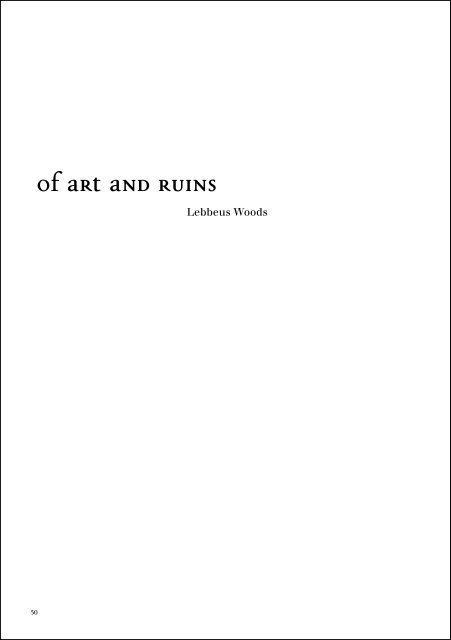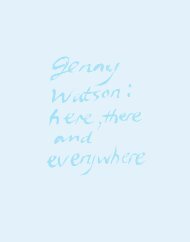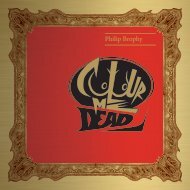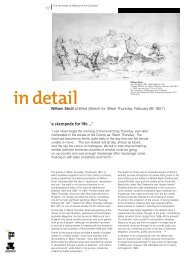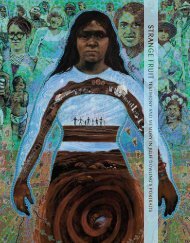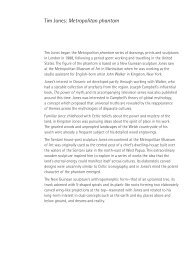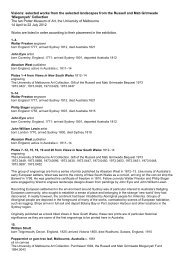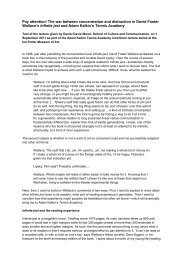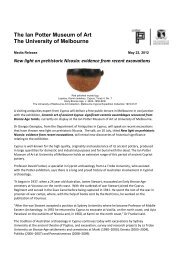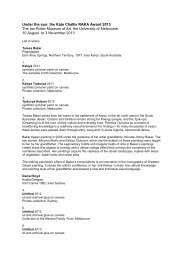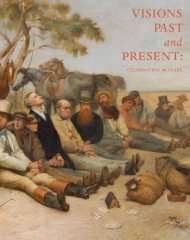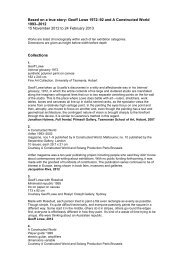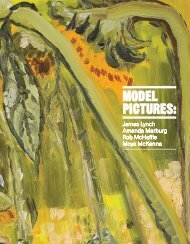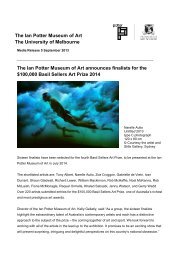The body the ruin
Catalogue - Ian Potter Museum of Art - University of Melbourne
Catalogue - Ian Potter Museum of Art - University of Melbourne
You also want an ePaper? Increase the reach of your titles
YUMPU automatically turns print PDFs into web optimized ePapers that Google loves.
Of art and <strong>ruin</strong>s<br />
Lebbeus Woods<br />
Flashed around <strong>the</strong> world in September 2001, <strong>the</strong> pictures of <strong>the</strong><br />
World Trade Center towers lying in <strong>ruin</strong>s were both horrifying<br />
and—though few would openly admit it—strangely stimulating. <strong>The</strong><br />
former because we instantly realized, with despair, that many people<br />
had died in <strong>the</strong> towers’ collapse, and that many o<strong>the</strong>rs would suffer as<br />
a result of it for <strong>the</strong> rest of <strong>the</strong>ir lives. <strong>The</strong> latter because such a grand<br />
scale of destruction evoked an essential truth about human existence,<br />
a truth so disturbing that it is usually cloaked in denial: we are all<br />
going to die.<br />
Not only will we die, but so will all our works. <strong>The</strong> great buildings,<br />
<strong>the</strong> great works of art, <strong>the</strong> great books, <strong>the</strong> great ideas, on which so<br />
many have spent <strong>the</strong> genius of human invention, will all fall to <strong>ruin</strong>s<br />
and disappear in time. And not only will all traces of <strong>the</strong> human as<br />
we know it vanish, but <strong>the</strong> human itself will, too, as it continues an<br />
evolutionary trajectory accelerated by bioengineering and future<br />
technological advances. What all of this means is that we cannot take<br />
comfort in any form of earthly immortality that might mitigate <strong>the</strong><br />
suffering caused by <strong>the</strong> certainty of our personal extinction.<br />
It is true that through works of art, artists can live on in <strong>the</strong> thoughts<br />
and actions of o<strong>the</strong>rs. This, however, is more of a comfort to <strong>the</strong><br />
living than to <strong>the</strong> dead, and while it may help a living artist maintain<br />
a denial of death effective enough to keep believing that working<br />
and striving is somehow lasting, it is an illusion, and a pretty<br />
thin one at that. In contrast, <strong>the</strong> solidarity that develops between<br />
people who accept <strong>the</strong> inevitability of oblivion is more substantial<br />
and sustainable. When we witness an accident or disaster, we are<br />
drawn to it not because of ‘prurient interest’, or an attraction to <strong>the</strong><br />
pornography of violence, but ra<strong>the</strong>r to an event that strips away<br />
<strong>the</strong> illusions of denial and reveals <strong>the</strong> common denominator of <strong>the</strong><br />
human condition. For <strong>the</strong> moment of our witnessing we feel, however<br />
uncomfortably, part of a much larger scheme of things, closer to what<br />
is true about our existence than we allow ourselves to feel in <strong>the</strong><br />
normal course of living.<br />
50 51


